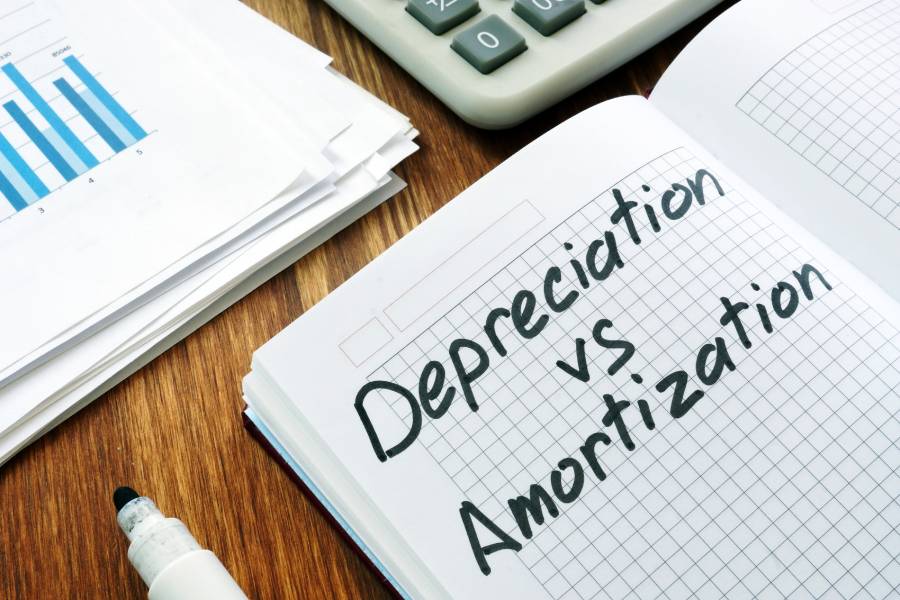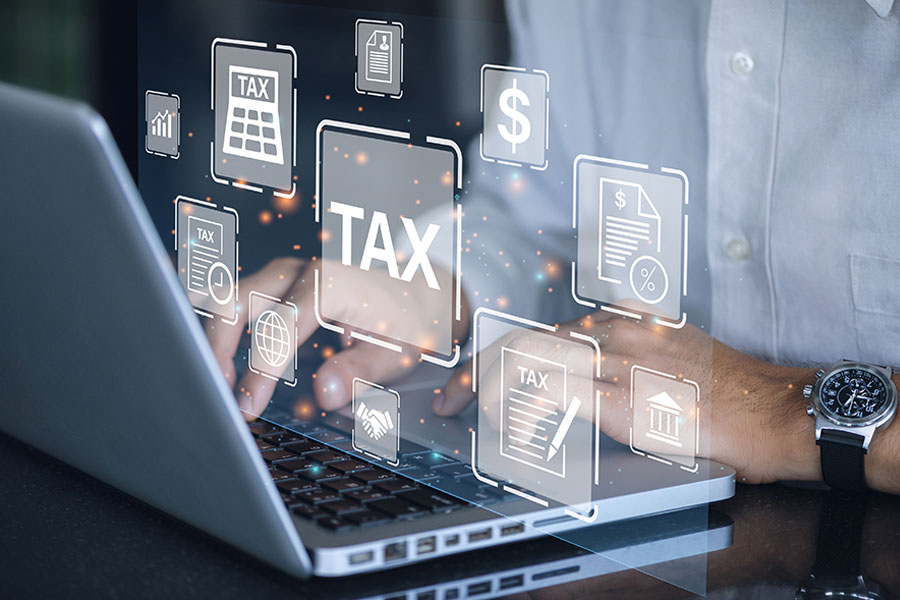Section 179 and bonus depreciation are two advantageous tax deductions for optimizing your tax savings. By claiming either or both of these deductions on your tax return, you can more quickly deduct a substantial amount of your acquisition cost. While Section 179 and bonus depreciation are similar, there are differences in the calculation, limitations, and flexibility. Let’s compare bonus depreciation and Section 179 to see what sets them apart.
Section 179 | Bonus Depreciation | |
|---|---|---|
Best Candidate for Deduction | Most small businesses should claim Section 179 up to the maximum dollar or income limitation since bonus depreciation is only 60% (for 2024) of the purchase price of the asset. | Businesses should claim bonus depreciation on eligible purchases that exceed the annual dollar limitation for Section 179. |
How the Deduction Is Claimed | An election must be made to expense property under Section 179 on Part I of IRS Form 4562. | This is an automatic deduction; no election needs to be made. |
Flexibility | This deduction can be claimed in whole or in part on a per-asset basis, and you can also specify the amount of Section 179 deduction that you want to claim for a particular asset. | Bonus depreciation automatically applies to all eligible purchases. You can make an election to opt out for an entire asset class
An asset class is a grouping of assets according to the number of years over which the assets are depreciated.
or all eligible classes of property
You cannot elect out of bonus depreciation for particular assets without electing out for the entire class.
. |
Annual Dollar Limits | The Section 179 deduction is limited to $1,220,000 (for 2024). The maximum deduction is reduced dollar for dollar by the amount of property purchased that exceeds $3,050,000 (for 2024). Both the limit and phase-out threshold are adjusted annually for inflation. | Bonus depreciation is not subject to an annual dollar limitation, but rather allows you to deduct a maximum percentage of qualifying property. You can deduct 60% of the cost of property in 2024 (40% for 2025). The acquisition cost not claimed as bonus depreciation can be depreciated under the normal MACRS rules. |
Taxable Income Limit | The amount of the deduction that is available to you is limited to your taxable income. If you do not have any taxable income, you can’t deduct any Section 179 expense. However, you can still elect Section 179 and the Section 179 in excess of your income will be carried forward. | Since it is not limited by your taxable income, bonus depreciation can be used to create a net loss. If bonus depreciation does create a net operating loss (NOL), you can carry it forward or back (if applicable) to offset other income. |
Recapture of Tax Deduction | For listed property, Section 179 is subject to recapture if the business use of the property falls below 50%. | Bonus depreciation is not subject to recapture if business use falls below 50%. You may be subject to recapture if you sell or otherwise dispose of the property. |
Learn More |
Qualifying Property for Section 179 & Bonus Depreciation
- Qualifying property for Section 179 is tangible personal property (versus real property) used in a trade or business for more than 50% of the time.
- Qualifying property for bonus depreciation is property with a MACRS recovery period of 20 years or less used in a business for more than 50% of the time.
While these definitions are structured differently, most 20-year-or-less MACRS property is also tangible personal property. Therefore, with a few exceptions, Section 179 and bonus depreciation apply to the same property.
Qualifying Property | Section 179 | Bonus Depreciation |
|---|---|---|
Computers & Mobile Devices | ✓ | ✓ |
Machinery & Equipment | ✓ | ✓ |
Office Furniture & Equipment | ✓ | ✓ |
Plumbing Components of a Building | ✕ | ✕ |
Special Plumbing Items for Specific Machinery or Equipment | ✓ | ✓ |
✕ | ✕ | |
HVAC Systems to Meet Special Business Needs | ✓ | ✓ |
Off-the-Shelf Software | ✓ | ✓ |
Vehicles Under 6,000 Pounds (Limitations for 2024 Tax Year) Learn more about Vehicle Depreciation. | Limited to $12,400 | Limited to $8,000 |
Qualified Improvement Property | ✓ | ✓ |
Nonresidential Roof Improvements or Replacements | ✓ | ✕ |
Nonresidential HVAC Improvements or Replacement | ✓ | ✕ |
Nonresidential Alarm System Improvement or Replacement | ✓ | ✕ |
Qualified Improvement Property (QIP), which qualifies for both bonus depreciation and Section 179, is any improvement to the interior of nonresidential Section 1250 property, such as a warehouse, barn, rental property, or commercial buildings. The improvement must be made after 2017 and after the building was initially placed in service by the taxpayer.
Claiming Section 179 & Bonus Depreciation in the Same Year
You can claim both Section 179 and bonus depreciation in the same year—but not on the same acquisition costs. Below is an example of how claiming both deductions will maximize your tax benefit for 2024 and beyond when the bonus depreciation rate is less than 100%.
Example Claiming Only Bonus Depreciation
Michael Scott purchased $3.5 million of 5-year MACRS property for his paper company in 2024. For his purchase, he is allowed to claim both the Section 179 deduction and bonus depreciation, but he chose not to make the Section 179 election on IRS Form 4562 and only claim bonus depreciation.
After crunching the numbers, Michael learned that his total bonus depreciation allowance for the year is $2,100,000 (as calculated below). The remaining $1,400,000 of the cost will be depreciated for 5 years under the normal MACRS rules.
Here’s how Michael figured his bonus depreciation allowance:
$3,500,000 (total cost of assets) × 60% (2024 bonus depreciation rate) = $2,100,000 (Michael’s bonus depreciation allowance)
Example Claiming Both Section 179 & Bonus Depreciation
Let’s consider the same facts as above, except this time Michael makes the Section 179 election and also claims bonus depreciation. Remember the maximum Section 179 limit for 2024 is $1,220,000, and that must be reduced for total asset purchases above $3,050,000.
To calculate the deduction, Michael performs the following steps:
- He calculates his maximum Section 179 deduction by figuring the reduction of the Section 179 limitation for purchases in excess of $3,050,000:
-
- $3,500,000 − $3,050,000 = $450,000
- He then figures his maximum and total Section 179 deduction for 2024:
-
- $1,220,000 − $450,000 = $770,000
- He allocates the remaining $2,730,000 ($3,500,000 − $770,000) of the acquisition cost to the bonus depreciation for 2024:
-
- $2,730,000 × 60% = $1,638,000
- He then adds his Section 179 allowance to his bonus depreciation allowance:
-
- $770,000 + $1,638,000 = $2,408,000
2,408,000 is the total amount Michael can deduct using these two tax provisions in 2024. The remaining $1,092,000 ($3,500,000 − $2,408,000) will be depreciated under the normal MACRS rules.
Upon review of both methods, using both Section 179 and bonus depreciation gives Michael the most benefit. As shown in this example, the highest total deduction generally comes by maximizing your Section 179 and then claiming bonus depreciation on the remaining cost.
Frequently Asked Questions (FAQs)
Each business owner has a unique tax situation; thus, when choosing between bonus depreciation vs Section 179 or claiming both, you should select the deduction(s) that gives you the most tax benefit.
Yes, you can claim both Section 179 and bonus depreciation in a single tax year—but not on the same assets. When doing so, the Section 179 allowance will be taken into account first, and then bonus depreciation will be applied.
If both deductions apply, there may be some circumstances where opting out of bonus depreciation is beneficial. For example, if you are thinking of applying for a small business loan or other financing and do not want to lower the taxable income of the business, it may be best to opt out of bonus depreciation to keep your income high for the year.
Bottom Line
Section 179 and bonus depreciation are both powerful tax-saving tools. Knowing when and how to use bonus depreciation vs Section 179 could help your business maximize its tax savings. If your business owns tangible property, you do not want to miss out on using these two tax provisions. Section 179 is just one of the many deductions that play a role in your ending tax calculation. For more information on how to finalize your numbers, check out our article on how to calculate small business taxes.


